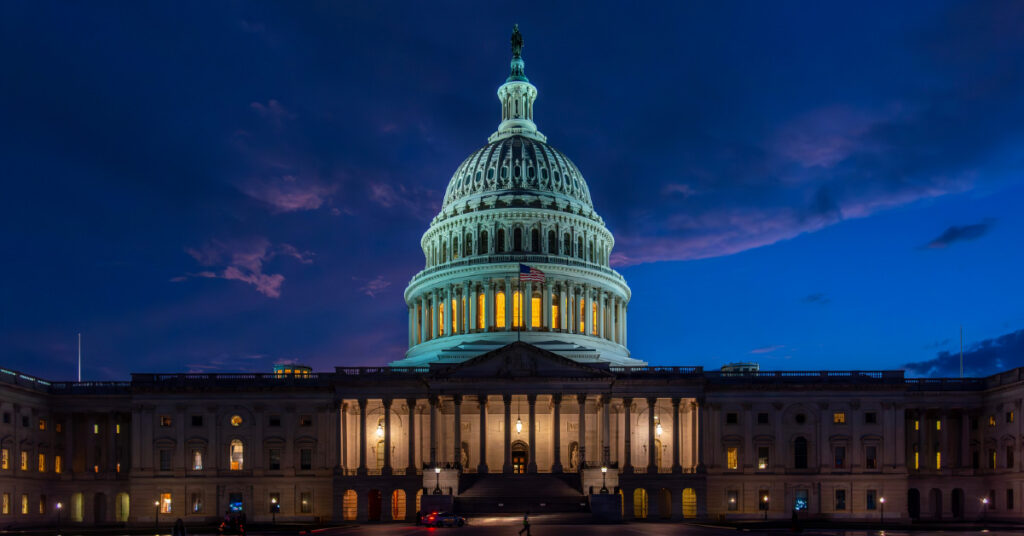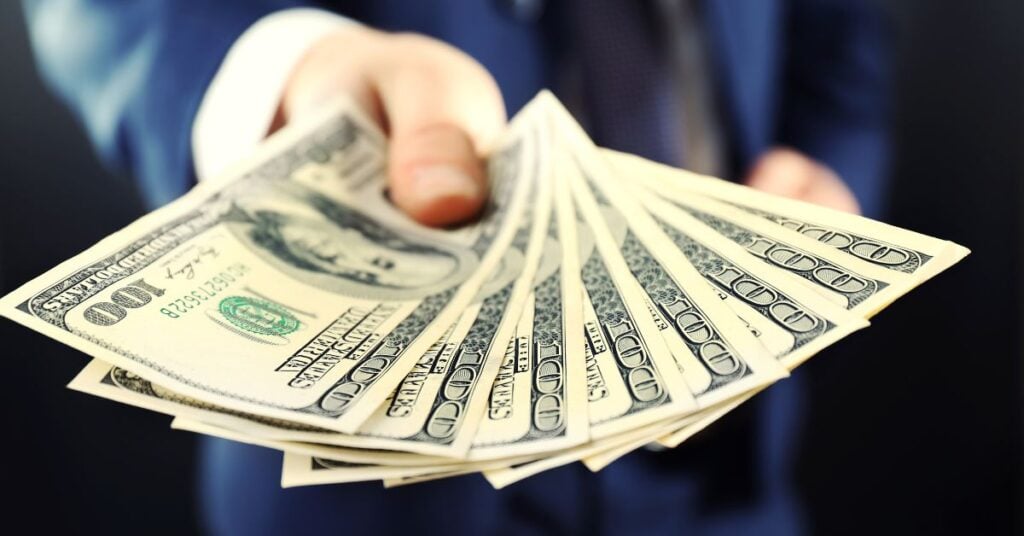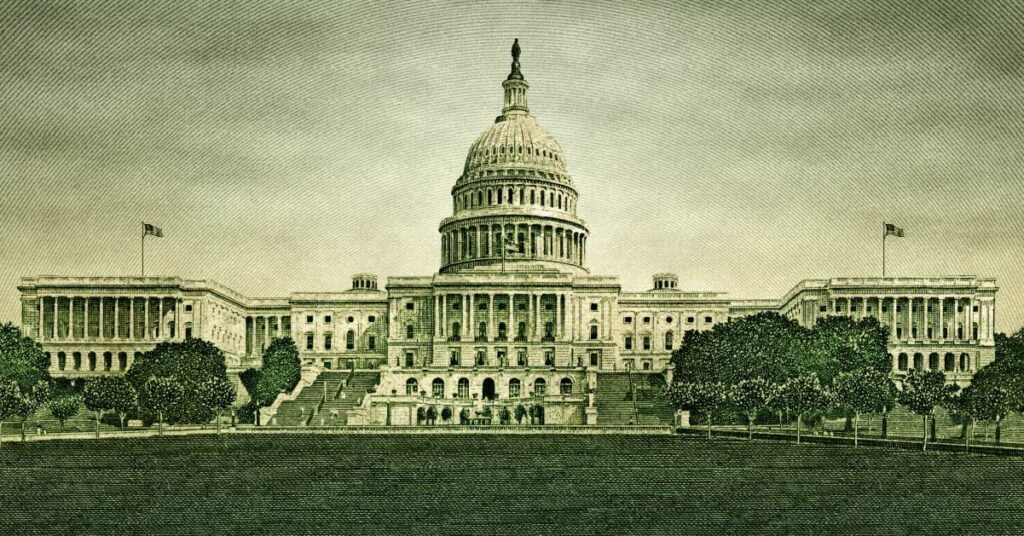During his State of the Union address, President Biden asked Congress to raise the excise tax rate on corporate stock buybacks from 1 to 4 percent. When a company announces stock buybacks, they are telling the world that they do not have productive investments to make within the company and would rather give their cash to their shareholders. The public does have productive investments to make with the tax revenue, like schools, roads, and healthcare.
The 1 percent tax only went into effect last month, but initial evidence points toward the tax’s potential to raise higher than expected revenue. It also appears that the tax is not high enough to eliminate the tax advantage for buybacks over other methods that corporations use to send profits to shareholders. While corporate dividends paid to shareholders are subject to the personal income tax in the year they are distributed, stock buybacks effectively give the same financial benefit to shareholders by boosting stock values but can remain untaxed for years or in some cases forever. The stock buyback tax can reduce that disparity, but its current rate of 1 percent is not high enough to eliminate it.
Already this year, Chevron announced a new $75 billion buyback program after a year of record profits, and they aren’t alone – many profitable corporations have announced huge buybacks so far in 2023.[1] In the first four years after former President Trump’s corporate tax cuts went into effect in 2018 as part of the Tax Cuts and Jobs Act, the largest corporations collectively spent more on enriching their shareholders through stock buybacks than on investments in plants, equipment, or software that might have created new jobs and grown the economy.
Why Corporations Use Buybacks
Companies use cash holdings to purchase their own stock when they determine that this will improve the share price or other financial metrics like price-earnings ratio, return on assets, and return on equity. This can be an enormous boon for corporate executives who are often compensated through equity in the corporation, and whose relationship with their boards depends largely on stock performance.
It is also an acknowledgment that there are few productive investments within the corporation to spend the cash on. If a company has large cash holdings and few productive investments to spend that cash on, it may choose to send some of that cash to shareholders through dividends or buybacks so they can find new profitable investments outside of the company. Of course, a corporation could always raise workers' pay and benefits, but this is rarely the favored approach of executives and shareholders when they can receive a tax-favored distribution of the cash through buybacks.
Buybacks Allow Shareholders to Avoid Paying Taxes on Dividends
Regardless of the motivation for buybacks, shareholders should not receive a tax advantage for buybacks over dividends, given that both accomplish the same thing. Both are effectively ways to distribute the corporation’s cash holdings to shareholders. Dividends accomplish this by directly distributing cash to investors according to the number of shares they own. Shareholders then pay income tax on their dividends, most often at a rate between 15 and 23.8 percent. Foreign investors (who own about 40 percent of U.S. corporate stock) may pay a rate up to 30 percent, though it is typically reduced to 15 percent through tax treaties.[2],[3]
Stock buybacks work more indirectly. When a company purchases shares of its own stock, the shareholders who sell their shares realize a capital gain (or loss) on the sale. Individual shareholders residing in the U.S. owe tax on their capital gains, typically at a rate of 15 to 23.8 percent. Foreign shareholders who sell their shares owe taxes on their capital gains according to the income tax system of their country of residence—potentially very low or zero.
The tax disparity between dividends and buybacks arises when shareholders do not sell back their stock during the buyback. When the number of outstanding shares is reduced, the remaining shareholders benefit from increased value per share. This rise in value increases the capital gains on those assets, but shareholders do not owe taxes on those gains until they sell their shares and the gains are considered “realized.” This presents two distinct tax advantages for U.S. shareholders.
First, shareholders may hold onto their shares, deferring the income tax for years or decades. This is not merely a matter of timing but rather allows shareholders to generate even more income over time. As their shares appreciate, their wealth and purchasing power rises. Even worse, shareholders may take loans against their assets, allowing them to effectively spend their income without technically “realizing” it and paying income taxes on it.
Second, if shareholders do not ever sell their assets, the capital gains will escape taxation completely. Unrealized gains on assets passed to heirs disappear from the tax system under current rules. The heirs benefit from the stepped-up basis rule, which resets the capital gains on assets to zero at the time of inheritance. Heirs then owe capital gains taxes only on the gains that accrued after they took ownership of the shares. (ITEP has covered the deferral of capital gains taxes and the stepped-up basis rule extensively in previous reports.[4])
Foreign investors benefit in similar ways. Foreign shareholders who hold onto their shares also benefit from the rising value without needing to pay the dividends tax. Once again, if their country of residence has a very low tax rate on capital gains, then the savings can be enormous.
Whether stock buybacks are used as a legitimate tool for distributing cash holdings or are made in lieu of productive investments and disproportionately benefit the wealthy, they should not receive favorable tax treatment over other methods of distributing capital to shareholders. This tax disparity only serves to create corporate tax maneuvering and deprive the public of necessary revenue.
The 1 Percent Excise Tax
Recognizing the need to tax stock buybacks, Congress implemented a 1 percent excise tax on corporations who repurchase their own shares under the Inflation Reduction Act. Under the new tax, Chevron, for example, will owe $750 million in excise taxes as it carries out its $75 billion buyback plan.
Obviously, a 1 percent excise tax is much lower than a 15 to 23.8 percent income tax rate on dividends. The buyback tax moves toward tax parity between buybacks and dividends through an indirect approach. Whereas individuals pay income taxes on dividends, corporations pay the buyback excise tax, which lowers their total assets and thus reduces the value of their shares. This is not enough to entirely erase the tax advantage for most shareholders—particularly not for foreign investors in countries with low capital gains rates—but it does reduce the relative advantage of buybacks.
However, the excise tax creates a clear preference for dividends among shareholders not subject to tax. These investors own about 35 percent of US stocks and are primarily comprised of non-taxable retirement accounts. Prior to implementation of the excise tax, neither dividends nor buybacks carried a tax advantage for these investors.
Many experts believed that the combined effects of a reduction in relative tax advantage for taxable accounts and a clear tax advantage in dividends for non-taxable accounts would mean that any excise tax whatsoever on stock buybacks would be enough to curb their upsurge.[5]
Buyback Tax Has Not Slowed Buyback Activity
Despite the excise tax taking effect on January 1, it does not appear that buybacks are slowing. In fact, the early evidence looks like 2023 could be another marquee year for buybacks. In addition to the Chevron announcement, Meta (the parent company of Facebook) announced a new $40 billion buyback plan. In total, $132 billion in new buyback plans were announced in January 2023.[6]
If this trend holds throughout the year, a 1 percent excise tax is not likely high enough to significantly impact the tax disparity between dividends and buybacks. Although non-taxable investors now pay some taxes on buybacks compared to no taxes on dividends, they do so indirectly through a slight decline in the value of their stock that is difficult to quantify. At the same time, buybacks continue to hold a clear tax advantage for taxable investors.
This raises the question: how high would the buyback excise tax need to rise to be at parity with taxes on dividends? There is no single answer because different investors are subject to different dividend tax rates, and the excise tax lowers potential future earnings per share whereas taxes on dividends do not.
One possible solution to achieve parity is for Congress to implement the excise tax at a rate that generates the same amount of federal revenue as taxes on dividends. Under the simplified assumption that foreign shareholders pay an average dividend tax rate of 15 percent and that taxable domestic shareholders pay an average rate between 15 and 23.8 percent, the excise tax on buybacks would need to be approximately 10 to 12 percent to raise the same amount of revenue as if buybacks were taxed as dividends. Of course, setting the rate at this level would affect companies’ financial performance and shift non-taxable investors’ preferences toward corporations that only issued dividends. If non-taxable accounts disinvested entirely from companies engaging in buybacks, then the revenue-neutral excise tax rate would rise to the average dividends tax rate paid by all taxable investors.
An alternative method would be for Congress to treat buybacks as dividends. A proposal was introduced by Sen. Marco Rubio in 2018 to tax shareholders benefiting from buybacks as if they had received a dividend. [7] Shareholders would owe an imputed dividend tax when the buyback occurred rather than paying the capital gains tax when they sold their shares. While dividends and capital gains are generally taxed at the same rate for domestic shareholders, this plan would eliminate the ability of investors to avoid taxes altogether with the stepped-up basis rule. It would also dramatically raise the taxes paid in the United States by foreign investors.
Although the Rubio proposal would introduce the greatest parity between buybacks and dividends, the structure is complicated. Taxing buybacks as dividends would require subtracting a proportional amount from capital gains when the shares are sold. Otherwise, shareholders would be taxed twice on the buyback—first as a deemed dividend when the buyback occurs and again as capital gains when the asset is sold.
A higher excise tax rate on buybacks is completely reasonable. Quadrupling the rate, as the President proposes, would raise more revenue and cut into the tax advantage buybacks have over dividends. When a company uses their cash holdings to repurchase their own stock, it is an admission that they have few productive investment opportunities. The public does have productive uses for the tax revenue like infrastructure and schools that create value for the entire economy.
[1] Kevin Crowley, Bloomberg, “Chevron to Buy Back $75 Billion in Stock After Record Profit,” January 25, 2023. https://www.bloomberg.com/news/articles/2023-01-25/chevron-raises-dividend-plans-to-buy-back-75-billion-in-stock#xj4y7vzkg
[2] Steve Rosenthal and Theo Burke, Urban-Brookings Tax Policy Center, “Who’s Left to Tax? US Taxation of Corporations and Their Shareholders,” October 27, 2020. https://www.law.nyu.edu/sites/default/files/Who%E2%80%99s%20Left%20to%20Tax%3F%20US%20Taxation%20of%20Corporations%20and%20Their%20Shareholders-%20Rosenthal%20and%20Burke.pdf
[3] Internal Revenue Service, “Tax Rates on Income Other Than Personal Service Income Under Chapter 3, Internal Revenue Code, and Income Tax Treaties,” Revised February 2019. https://www.irs.gov/pub/irs-utl/Tax_Treaty_Table_1_2019_Feb.pdf
[4] Steve Wamhoff, ”Congress Should Reduce, Not Expand, Tax Breaks for Capital Gains,“ Institute on Taxation and Economic Policy, February 1, 2019. https://itep.org/congress-should-reduce-not-expand-tax-breaks-for-capital-gains/
[5] Tim Shaw, " The Long Read: Excise on Stock Buybacks Draws Mixed Response," Reuters, August 12, 2022. https://tax.thomsonreuters.com/news/the-long-read-excise-on-stock-buybacks-draws-mixed-response/
[6] Mark Whitehouse and Erik Wasson, Washington Post, “All About Stock Buybacks, a $1 Trillion Market Force,” February 7, 2023. https://www.washingtonpost.com/business/all-about-stock-buybacks-a-1-trillion-market-force/2023/02/06/13706354-a66b-11ed-b2a3-edb05ee0e313_story.html
[7] Reuters, “U.S. Republican Senator Rubio Pushes Plan to Tax Stock Buybacks,” February 13, 2019. https://www.reuters.com/article/us-usa-tax-buybacks/u-s-republican-senator-rubio-pushes-plan-to-tax-stock-buybacks-idUSKCN1Q22WY




